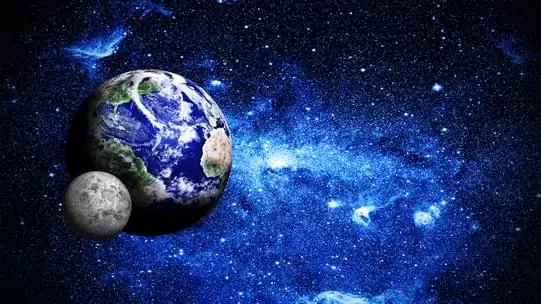1 Like
Moon was once part of Earth!?
Last updated on Jan. 27, 2021, 7:17 a.m. by sanket

The moon may have formed after hitting a magma covered new-born earth by a giant Mars-size rock, a new study finds. The planet came together about 4.5 billion years ago and earlier studies indicated that the moon emerged a short time later. The prevailing explanation for the moon's origin over the past three decades has been that the moon was the result of the collision of two protoplanets or embryonic worlds. One was the new-born Planet, and the other a Mars-sized rock called Theia, called after the moon's mother.
This "Hypothesis of Giant Impact" seemed to clarify many specifics about Planet and the moon, including the moon's large scale relative to that of Earth, and the two bodies' rotation rates. Yet in the past 15 or so years ago, facts appeared that would dispute it and indicate a plethora of options.
Giant-impact scenario computer models often say that more than 60 percent of the moon should be made of Theia material. The problem is that most of the solar system 's bodies have unique chemical makeups, and Earth, Theia, and thus the moon should also. Rock samples from the moon, however, show that their composition is unusually more similar to Earth than these models would predict when it comes to isotopes.
One more recent model of lunar formation to help solve this mystery scientist suggested the moon might have arisen from such a violent impact, a significant part of earth vaporized, with the moon The resulting doughnut-shaped mass is called a synestia. A significant fraction of Earth material may have entered orbit to help form the moon if Earth was partly molten at the time of
the giant impact. The researchers created computer models simulating Earth filled with an ocean of magma, which most of the
world's forming models indicate the world was born soon after. Next, they studied what happened when a Mars-size rock struck this molten protoplanet around a tenth of Earth's mass.
The scientists found that only a glancing blow from Theia was capable of Knock more than 70% of moon forming debris out of the Earth's magma pool, as the molten rock was easier to blast off Earth than solid Rock. These findings can help to explain compositional differences Between the moon and the planet, thus describing specificities including Their velocities
in motion.
The new model suggests the volume of debris from the impact of a molten Earth has been compared with the moon 's current mass. However, prior work suggested that the giant impact would first need to generate an amount of debris equal to about three to four times the mass of the moon in order to build the moon. Future research could consider larger masses for Theia and factor in proto-Earth rotation to see if that could lead to enough debris to form a moon of the correct size.
And these studies indicate that “Moon was once a part of Earth” …….
1 Like

Suggested Posts




